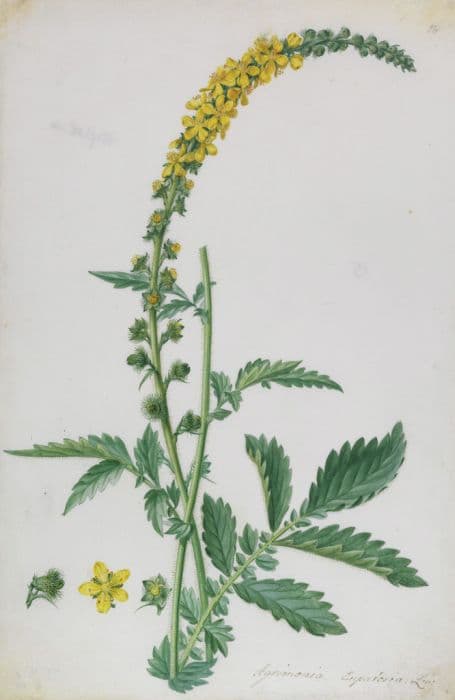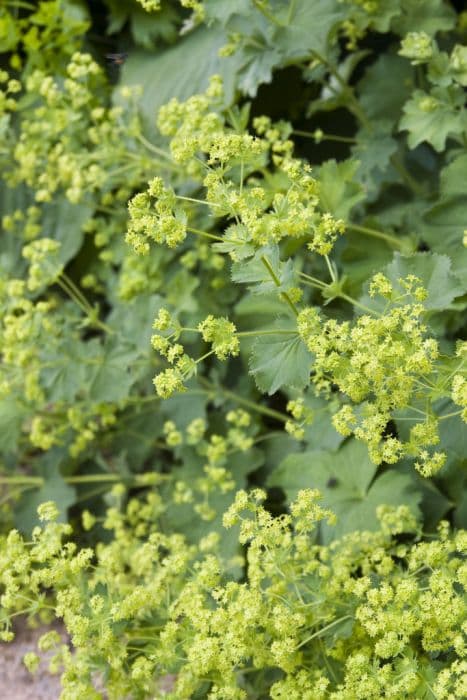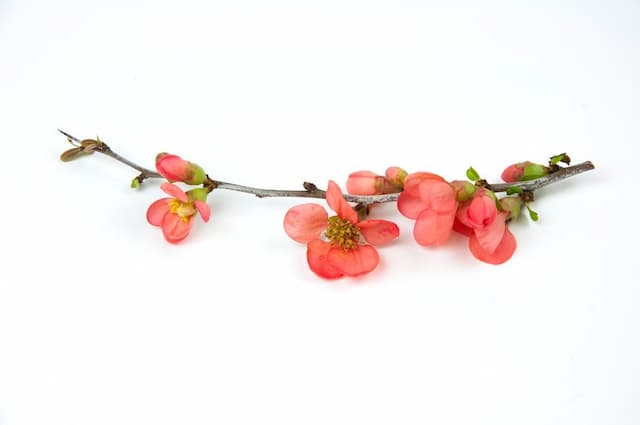Summer Song Rose Rosa Summer Song = 'Austango' (PBR) (S)
![rose [Summer Song]](/_next/image?url=https%3A%2F%2Fplants-admin.emdemapps.com%2Fimages%2Fplants%2F%2Fimages%2F604b5f52bbf73.png&w=3840&q=75)
ABOUT
The Rosa Summer Song, commonly known as a type of English Rose, is a distinct plant known for its captivating beauty. This rose variety features a delightful palette of colors. Its blooms display a unique blend of warm, apricot-orange hues, which may vary in intensity and can exhibit subtle touches of a pinkish tint at the edges as the flowers mature. These blossoms are typically full and densely petalled, forming a classic rosette shape that exudes a romantic charm typical of traditional English roses. The flowers are not only visually striking but also notable for their exquisite fragrance. They emit a strong and pleasing scent that can be a composite of chypre fragrance, with hints of ripe fruits, and can also include undertones reminiscent of almond or myrrh, adding an additional sensorial layer to the plant's allure. The foliage of the Rosa Summer Song complements its showy flowers. The leaves are typically a glossy, deep green, which provides a luscious backdrop to the vibrant flowers. The contrast between the leaves and blooms makes the color of the roses even more pronounced. As the plant develops through the growing season, the flowers bloom with recurrent flushes, providing a long-lasting display of color. These roses are often found adding their picturesque charm to gardens and can equally serve as an excellent choice for cut flowers, bringing their alluring tones and fragrance indoors. Overall, the Rosa Summer Song is a captivating addition to any garden space, with its delightful blend of color, fragrance, and classic rose form. Its visual appeal and aromatic presence make it a favorite among rose enthusiasts and gardeners alike.
About this plant
 Names
NamesFamily
Rosaceae.
Synonyms
Summer Song Rose.
Common names
Rosa 'Austango'
 Toxicity
ToxicityTo humans
Generally, roses (Rosa species) are not considered toxic to humans. If ingested, roses are unlikely to cause poisoning. However, roses have thorns that can cause physical injury if handled carelessly. In some rare cases, people with particular sensitivities might experience an allergic reaction. It's important to note that while the flower petals of some rose species are edible and are indeed used in culinary applications, eating large quantities of any plant material may cause gastrointestinal discomfort due to the fibrous nature of plants.
To pets
Roses, including the Rosa 'Summer Song', are generally considered non-toxic to pets. If a pet ingests part of a rose, they are unlikely to experience poisoning. However, the thorns on roses can cause physical injuries, such as scratches or punctures, to pets. As with humans, eating a large amount of rose plant material might cause gastrointestinal upset in pets, such as vomiting or diarrhea, but this is due to irritation or the mechanical effects of the fibrous plant material rather than toxicity.
 Characteristics
CharacteristicsLife cycle
Perennials
Foliage type
Deciduous
Color of leaves
Green
Flower color
Orange
Height
4 feet (1.2 meters)
Spread
3 feet (0.9 meters)
Plant type
Shrub
Hardiness zones
6
Native area
Cultivar
Benefits
 General Benefits
General Benefits- Attractive Blooms: Rosa 'Summer Song' features beautifully colored flowers that are eye-catching in any garden.
- Fragrance: This rose variety is known for its delightful fragrance, which can enhance the sensory appeal of a garden.
- Repeat Flowering: It usually blooms repeatedly throughout the season, providing long-lasting visual interest.
- Pollinator-Friendly: Roses attract bees, butterflies, and other pollinators, which are essential for the health of a garden ecosystem.
- Disease Resistance: 'Summer Song' roses are bred for increased resistance to common rose diseases, reducing the need for chemical treatments.
- Aesthetic Versatility: Suitable for mixed borders, standalone features, or as part of a rose garden, offering great versatility in landscape design.
- Emotional Wellbeing: The beauty and fragrance of roses are known to contribute to emotional wellbeing by creating a peaceful and pleasant environment.
 Medical Properties
Medical PropertiesThis plant is not used for medical purposes.
 Air-purifying Qualities
Air-purifying QualitiesThis plant is not specifically known for air purifying qualities.
 Other Uses
Other Uses- As a natural dye: The petals of roses can be used to create a natural dye for fabrics, offering hues from pink to orange depending on the processing.
- Culinary garnishes: Rose petals can be crystallized or used fresh to adorn desserts and add elegance to plate presentations.
- Scented candles: The fragrant petals and essential oils of the rose can be incorporated into wax to create luxuriously scented candles.
- Floral baths: Petals of the rose can be added to bathwater for a fragrant, soothing, and aesthetically pleasant bathing experience.
- Aromatherapy: Rose scent is known for its calming properties and can be used in aromatherapy to help reduce stress and promote relaxation.
- Potpourri: Dried rose petals and buds can be combined with other aromatic ingredients to create natural potpourri blends.
- Artistic medium: Rose petals can be used in pressed flower art, which involves drying and pressing the petals to create decorative patterns and designs.
- Handmade paper: Incorporating rose petals into handmade paper gives it a unique texture and appearance and a slight fragrance.
- Rose petal jam: A gourmet preserve that captures the delicate flavor of roses, which can be spread on bread or used to flavor pastries and creams.
- Wedding confetti: Biodegradable and more environmentally friendly than traditional paper confetti, rose petals can be tossed at weddings for a romantic touch.
Interesting Facts
 Feng Shui
Feng ShuiThe rose is not used in Feng Shui practice.
 Zodiac Sign Compitability
Zodiac Sign CompitabilityThe rose is not used in astrology practice.
 Plant Symbolism
Plant Symbolism- Love: As a rose, the Rosa Summer Song symbolizes love, indicating deep affection and romantic emotions often associated with the flower's timeless beauty and alluring fragrance.
- Passion: The vibrant color of Rosa Summer Song suggests a fiery passion and intensity in relationships or endeavors, reflecting the passionate nature of roses in general.
- Beauty: Roses are universally regarded as symbols of beauty, and the Rosa Summer Song with its elegant form embodies this ideal of aesthetic perfection and grace.
- Mystery: With its unique color blend and enchanting scent, the Rosa Summer Song can represent the mystery of love and the allure of the unknown, typical of rose symbolism.
- Balance: Often associated with harmony and balance, Rosa Summer Song, similar to other roses, could indicate a harmonious state or a desire for equilibrium in one's life.
 Water
WaterRose 'Summer Song' requires deep watering to encourage strong root development, typically around 1-2 gallons per week depending on weather conditions. In the growing season, water thoroughly when the top inch of soil feels dry to the touch. During hot, dry spells, water may be needed two to three times per week, while during cooler, wetter periods, watering once a week may suffice. Avoid overhead watering to reduce the risk of foliar diseases; instead, apply water directly to the base of the plant. It is crucial to adjust watering based on rainfall and avoid overwatering, which can lead to root rot.
 Light
LightFor optimal growth, Rose 'Summer Song' thrives in a location that gets full sun, meaning at least six hours of direct sunlight per day. The best spot is one with morning sun, which helps to dry dew from the leaves, reducing the risk of fungal diseases. Avoid planting in heavy shade or overly bright, reflected light which can scorch the foliage.
 Temperature
TemperatureRose 'Summer Song' enjoys moderate temperatures and can generally tolerate a range from around 32°F to 90°F. Ideal growing conditions are between 65°F to 75°F. Roses are resilient but may require protection when temperatures drop close to freezing to prevent damage to the plant.
 Pruning
PruningPruning Rose 'Summer Song' is critical to maintain its shape, promote vigorous growth, and improve air circulation. Prune in early spring as new growth begins, removing dead or weak wood and shaping the plant. Cut back the remaining canes by about one-third to one-half. Deadheading, or the removal of spent flowers, should be done throughout the blooming season to encourage repeat blooming.
 Cleaning
CleaningAs needed
 Soil
SoilThe Summer Song Rose prefers well-draining, fertile loam with added organic matter, such as compost or manure. The ideal soil pH should be between 6.0 and 7.0. A mixture containing equal parts garden soil, compost, and perlite or coarse sand would provide suitable conditions for healthy growth and abundant flowering.
 Repotting
RepottingSummer Song Roses, being garden roses, are not typically repotted as they are planted directly in the ground. However, if grown in containers, they should be replanted every 2-3 years into larger pots with fresh soil mix to ensure continued growth and blooming.
 Humidity & Misting
Humidity & MistingSummer Song Roses are adaptable to a wide range of humidity levels, but they perform best with moderate humidity. Prolonged high humidity can promote fungal diseases, so ensuring good air circulation around the plant is essential to mitigate this risk.
 Suitable locations
Suitable locationsIndoor
Place in bright, indirect light and ensure good air circulation.
Outdoor
Plant in sunny spot, shelter from harsh winds, water deeply.
Hardiness zone
5-9 USDA
 Life cycle
Life cycleThe Rose 'Summer Song' begins its life cycle as a dormant bare-root plant or potted specimen, which once planted in well-drained soil, enters the sprouting stage where shoots and leaves start to develop. Next, the growth stage sees the rose bush mature, producing lush foliage and stems as it establishes a strong root system. The flowering stage follows, where buds form and bloom into the characteristic apricot-orange flowers that 'Summer Song' is known for, typically from late spring through to fall. After pollination, some roses may enter the fruiting stage, producing rose hips; however, many gardeners deadhead spent blooms to encourage further flowering. The plant then enters a period of dormancy in the colder months, conserving energy and resources to survive the winter. With the return of warmer temperatures, the rose breaks dormancy, and the cycle begins anew with fresh growth.
 Propogation
PropogationPropogation time
Spring-Early Summer
The most popular method of propagating the Rosa Summer Song, or 'Austango', is through softwood cuttings. This typically occurs in late spring to early summer when the stems are new and still pliable. Gardeners should select a healthy stem with a few leaves, cutting it to a length of about six inches (approximately 15 centimeters). The bottom leaves are then removed, and the cut end dipped in rooting hormone to facilitate root development. This cutting is then planted in a well-draining soil mix, ensuring at least one set of leaf nodes is below the surface. The soil should be kept consistently moist while the cutting establishes roots, which may take several weeks. After rooting, the new rose plant can be gradually acclimated to outdoor conditions before being permanently planted in the garden.









